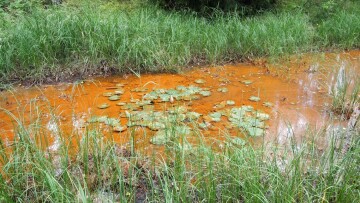Comparison of boreal acid sulfate soil microbial communities in oxidative and reductive environments

The article "Comparison of boreal acid sulfate soil microbial communities in oxidative and reductive environments" was published in Research in Microbiology, Volume 170, Issues 6–7, September–October 2019, Pages 288-295 and can be found here >> https://doi.org/10.1016/j.resmic.2019.06.002
Abstract
Due to land uplift after the last ice age, previously stable Baltic Sea sulfidic sediments are becoming dry land. When these sediments are drained, the sulfide minerals are exposed to air and can release large amounts of metals and acid into the environment. This can cause severe ecological damage such as fish kills in rivers feeding the northern Baltic Sea. In this study, five sites were investigated for the occurrence of acid sulfate soils and their geochemistry and microbiology was identified. The pH and soil chemistry identified three of the areas as having classical acid sulfate soil characteristics and culture independent identification of 16S rRNA genes identified populations related to acidophilic bacteria capable of catalyzing sulfidic mineral dissolution, including species likely adapted to low temperature. These results were compared to an acid sulfate soil area that had been flooded for ten years and showed that the previously oxidized sulfidic materials had an increased pH compared to the unremediated oxidized layers. In addition, the microbiology of the flooded soil had changed such that alkalinity producing ferric and sulfate reducing reactions had likely occurred. This suggested that flooding of acid sulfate soils mitigates their environmental impact.